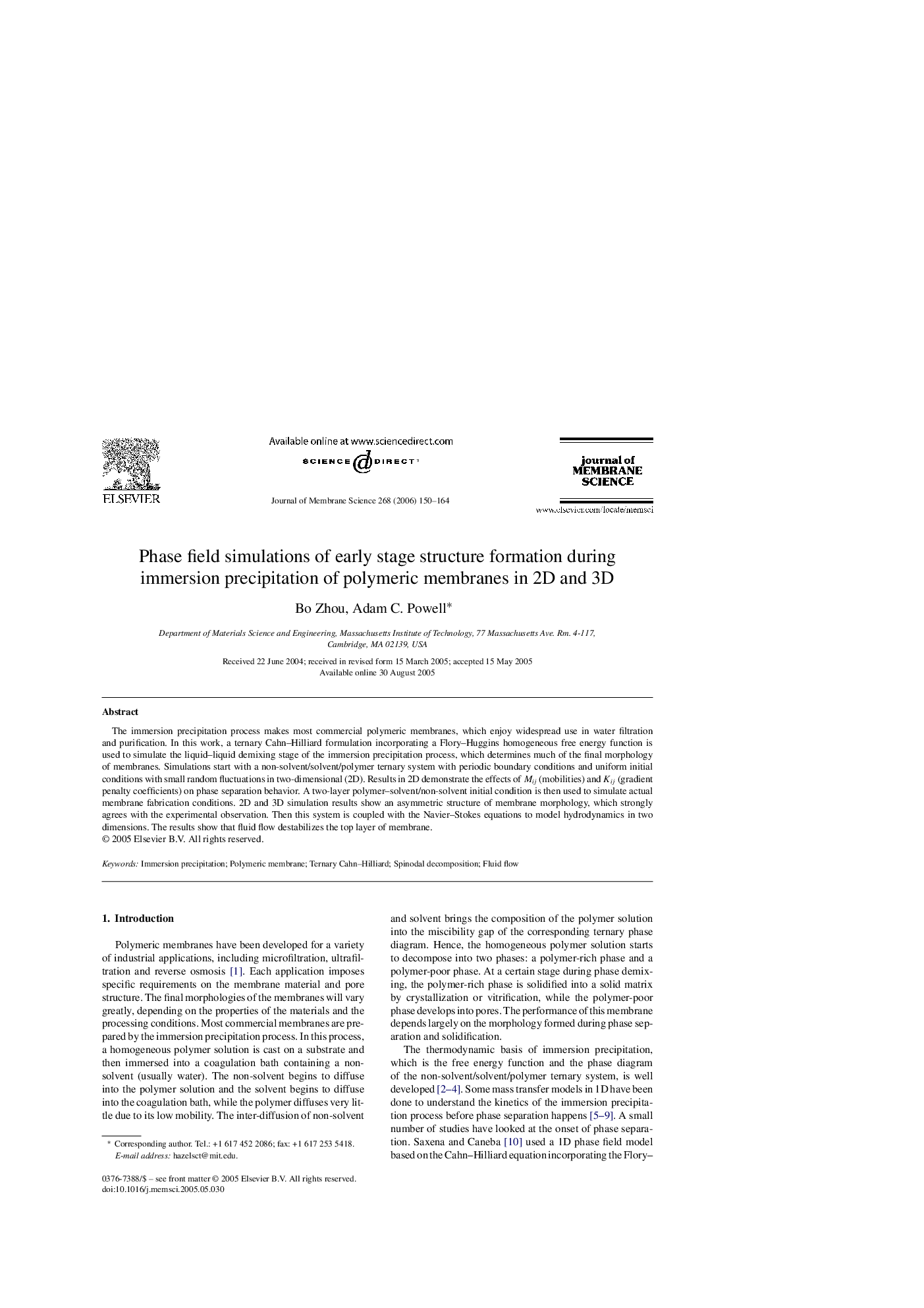| Article ID | Journal | Published Year | Pages | File Type |
|---|---|---|---|---|
| 639728 | Journal of Membrane Science | 2006 | 15 Pages |
The immersion precipitation process makes most commercial polymeric membranes, which enjoy widespread use in water filtration and purification. In this work, a ternary Cahn–Hilliard formulation incorporating a Flory–Huggins homogeneous free energy function is used to simulate the liquid–liquid demixing stage of the immersion precipitation process, which determines much of the final morphology of membranes. Simulations start with a non-solvent/solvent/polymer ternary system with periodic boundary conditions and uniform initial conditions with small random fluctuations in two-dimensional (2D). Results in 2D demonstrate the effects of MijMij (mobilities) and KijKij (gradient penalty coefficients) on phase separation behavior. A two-layer polymer–solvent/non-solvent initial condition is then used to simulate actual membrane fabrication conditions. 2D and 3D simulation results show an asymmetric structure of membrane morphology, which strongly agrees with the experimental observation. Then this system is coupled with the Navier–Stokes equations to model hydrodynamics in two dimensions. The results show that fluid flow destabilizes the top layer of membrane.
